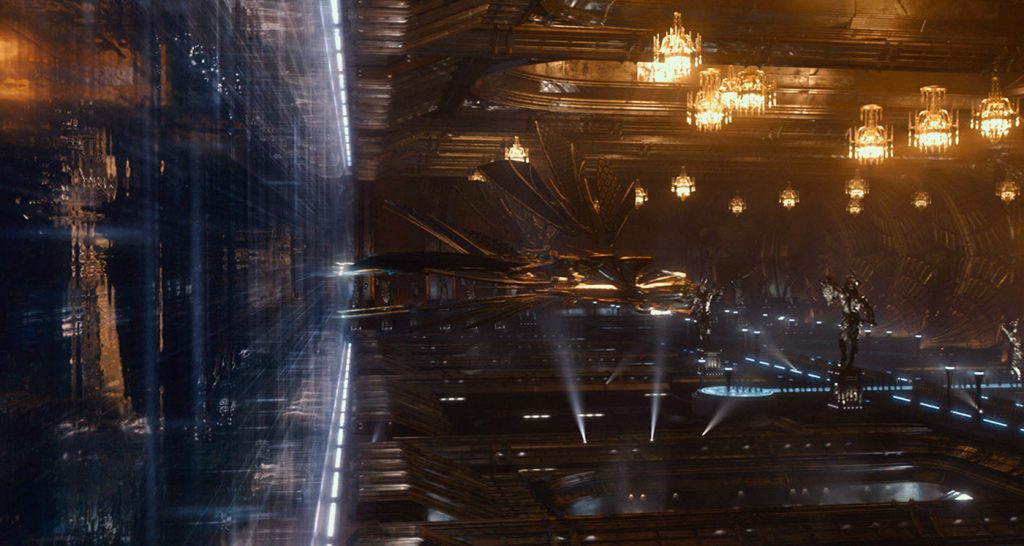Have you seen Jupiter Ascending? It’s based on an interesting premise (I’ll leave it up to you to decide if the movie itself is good or not). Namely, that there is a market for a substance that requires the farming of humans on Earth. But, that’s not the particular market I’m interested in today…
[aesop_parallax img=”http://lookbook.jupiterascending.com/images/assets/LandingBay-05.jpg” parallaxbg=”on” caption=”Who makes chandeliers for shuttle landing bays?” captionposition=”bottom-right” lightbox=”on” floater=”on” floatermedia=”Welcome to the fanciest shuttle landing bay in the galaxy.” floaterposition=”center” floaterdirection=”up”]
This post is about the market that enables the opulence that surrounds one character in the movie. Initially, I was struck by the fanciness of his shuttle and then I was taken aback by where that shuttle landed.
There were chandeliers. Statues. Gold-toned walls. All things that (in theory) had to stand up to potential vacuum. (After all, who would design components that were meant to go into an area that has a high chance of being exposed to vacuum that couldn’t withstand vacuum for a period of time?)
So, I stopped paying attention for a time to think about the possibility that this could exist. Not in terms of the science, but the financial viability. Of course, you say, it’s a rich man’s boat, he could pay anyone to build anything he wants… except it doesn’t always work like that. Imagine if said rich man saw a piece of work he admired, offered to hire the person that crafted that work to create chandeliers for his space yacht, and said craftsperson does the time / materials math and determines each chandelier would cost $8.5 Million (of today’s dollars) to make them worth his time. After all, Jupiter Ascending operates within a strongly capitalist society.
Chandeliers don’t give off much light. In this case, they are in a setting that requires light (i.e. where aerospace maneuvers happen). So, the bay needs approximately 100 of these fixtures. So that’s $85M in lighting inside of one landing bay. There’s still other lights, other rooms, and a spaceship frame, propulsion, life support, etc… lot’s of other things to pay for.
So, I think: No, this is not a viable product. But then, I see the humanoid androids at the wedding…
[aesop_image imgwidth=”90%” img=”http://images.fandango.com/images/fandangoblog/get-futuristic-jupiter-ascending-2014-mila-kunis-and-channing-tatum-official-movie-trailer-poster-2.jpg” credit=”Warner Bros” align=”center” lightbox=”on” caption=”All of the people under Mila Kunis’ feet are robots. Awesome.” captionposition=”left”]
…and think, Why the hell not? Why can’t this dude have chandeliers in his shuttle bay? If I can get on Etsy and get handmade earrings for $20, what’s stopping me from (eventually) having a stylish, custom, technology experience?
Yes, this is a movie; but, the things we have accessible to us today, including the sub-$300 laptop I’m typing this post on, were things thought to be unimaginable just 10 years ago. Unfathomable in terms of price point, access, and functionality.
Keep on pushing. Build your business cases and figure out how to make your product special and price it what it’s worth. You may not find a market large enough right away, but keep searching, pivoting, and refining.

I don’t typically comment on posts, but as a
long time reader I thought I’d drop in and wish you all the best during these troubling times.
From all of us at Royal CBD, I hope you stay well with
the COVID19 pandemic progressing at an alarming rate.
Justin Hamilton
Royal CBD
Thanks Justin — I’m well. Hope you are too.